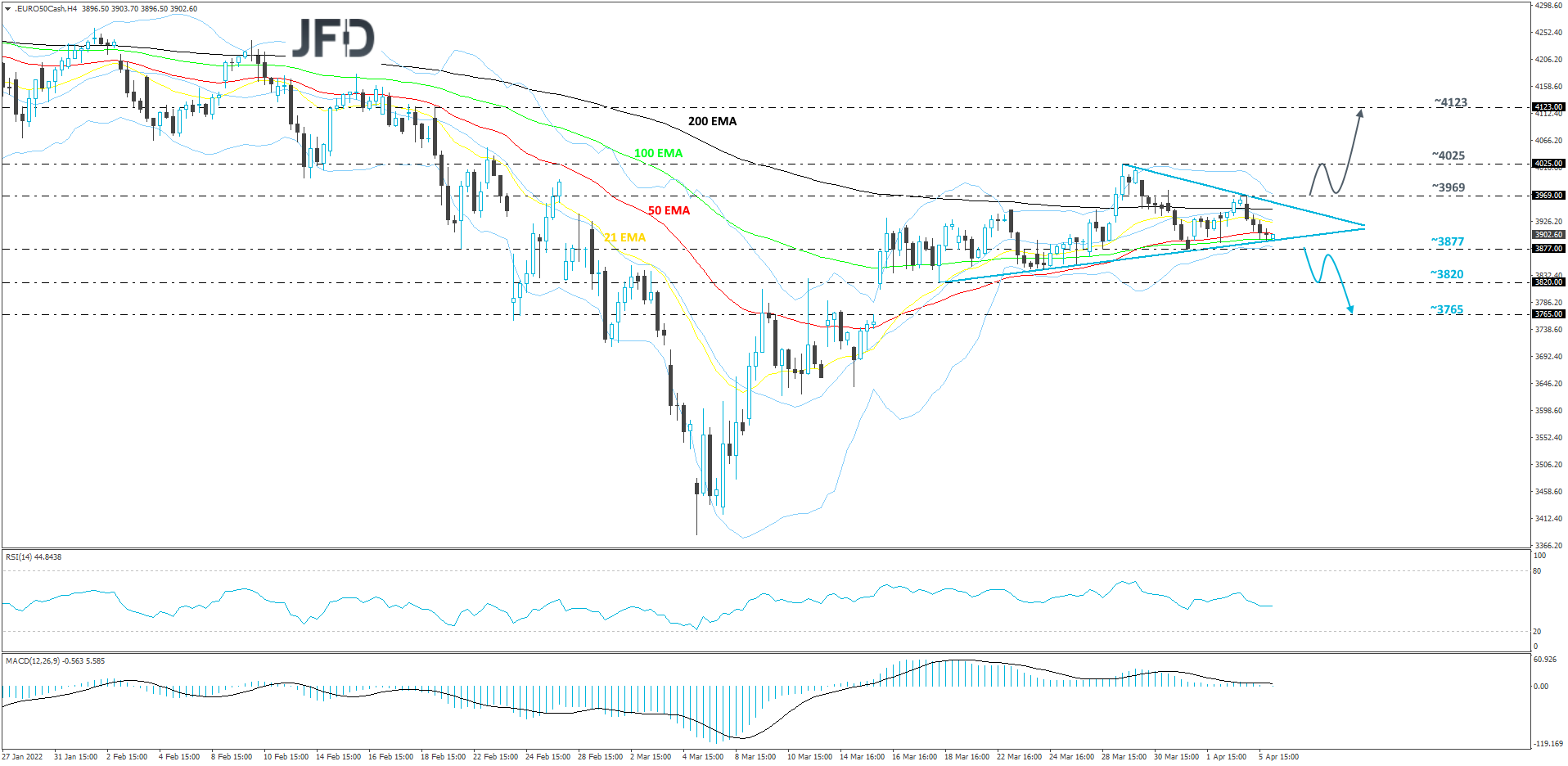Yesterday, the U.S. indices wiped off all the gains made on Monday, as the equity markets took a beating after Fed’s Brainard said that inflation is too high and remains subject to upside risks.
In the currency world, the Canadian dollar attracted many buyers yesterday after the reports that the U.S. would like to buy more oil from Canada. Canada will take the spotlight with its Ivey PMI figure for March, which is expected to rise slightly, going from 60.6 to 61.0. But the main event on the calendar will be the FOMC minutes from the last meeting, held in March.
Equities Took A Dive Yesterday
Yesterday, the U.S. indices wiped off all the gains made on Monday, as the equity markets took a beating after Fed’s Brainard said that inflation is too high and remains subject to upside risks. The Fed will continue tightening its monetary policy by imposing several interest-rate hikes.
The Dow Jones Industrial Average lost around 0.80%, the S&P 500 was down by 1.26%, and the NASDAQ was the biggest loser, shaving off around 2.26% Also, one of the other reasons for the declines might have been the U.S. PMI numbers for March.
The composite, services, and the ISM non-manufacturing PMI failed to meet their initial forecasts. In our view, the equity indices may start consolidating in the near future, until there is a strong catalyst.
The markets might see some positivity if the geopolitical issues stabilize, or they could go down if the Fed officials continue coming out saying that they are very hawkish. The European indices ended yesterday’s trading session with mixed results. The only two that managed to gain something were the FTSE 100 and the IBEX 35 indices.
Euro Stoxx 50 – Technical Outlook
The technical picture of Euro Stoxx 50 on our 4-hour chart shows that the index is currently trading between two short-term tentative trendlines, a downside one drawn from the high of Mar. 29 and the upside one taken from the low of Mar. 18. We would need to see an apparent breakthrough in one of the trendlines before examining the next short-term directional move.
If the aforementioned upside line breaks and the price falls below the 3877 hurdle, marked by the low of Mar. 31, that may open the door to some lower areas. Euro Stoxx 50 could fall to the 3820 obstacle, a break of which might set the stage for a move to the 3765 level, marked by the high of Mar. 15.
Alternatively, if the previously mentioned downside line surrenders and the price rises above the 3969 barrier, marked by the current highest point of April, that may invite more bulls into the field, potentially helping the index drift further north.
Euro Stoxx 50 may travel to the highest point of March, at 4025, a break of which would confirm a forthcoming higher high and could lead to a test of the 4123 level. That level marks the high of Feb. 21.
CAD And USD Were In The Spotlight Yesterday
The Canadian dollar attracted many buyers yesterday after the reports that the U.S. would like to buy more oil from Canada in the currency world. WTI oil was also seen moving a bit higher after the news. However, the oil price later on dropped due to market participants because new Russian sanctions might be in the works.
Also, the U.S. and other oil-producing countries said that they would tap into their oil reserves to compensate for the shortage that a ban on Russian oil has brought. The stronger U.S. dollar was also a cause for oil prices to move lower at the end of the trading session. DXY was able to overcome the March high and stay above it. For now, we believe that the U.S. dollar might stay under some buying pressure.
Canadian Ivey PMI and the FOMC Meeting Minutes Are Under The Radar
Today, Canada will take the spotlight with its Ivey PMI figure for March, which is expected to rise slightly, going from 60.6 to 61.0. If the figure comes out better than the forecast, this may help CAD strengthen slightly against some of its major counterparts. Even if the number comes out better than the previous figure, this will show a continuous rise for the fourth month in a row.
But the main event on the calendar will be the FOMC minutes from the last meeting, held in March. Investors will get reminded about the Fed’s view on the monetary policy outlook. During the last meeting, the FOMC committee decided to hike the interest rates by 25 bps. However, this will not be the last hike this year, as the Fed is preparing for another increase on May 4.
According to the CME FedWatch tool, the current expectation is to see an additional 50 bps hike. Such a move may apply more pressure to the stock market, possibly forcing some investors to move away from equities.
